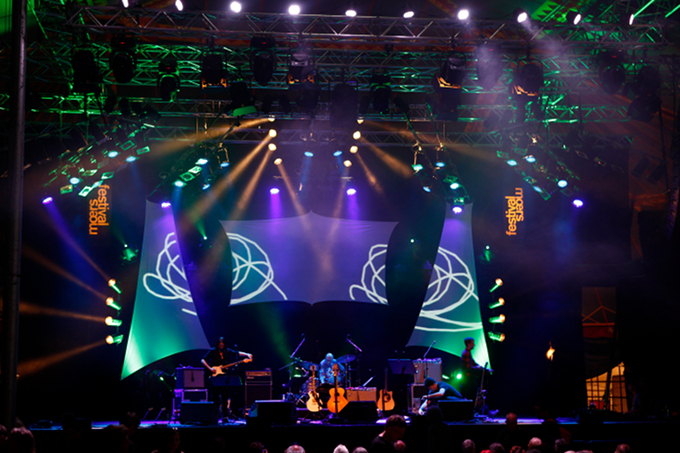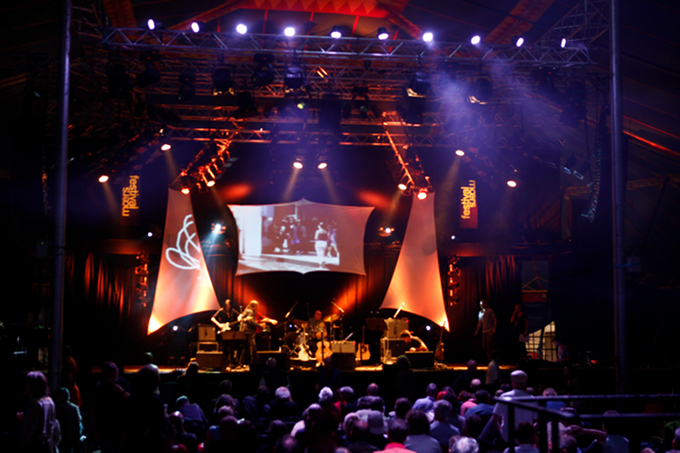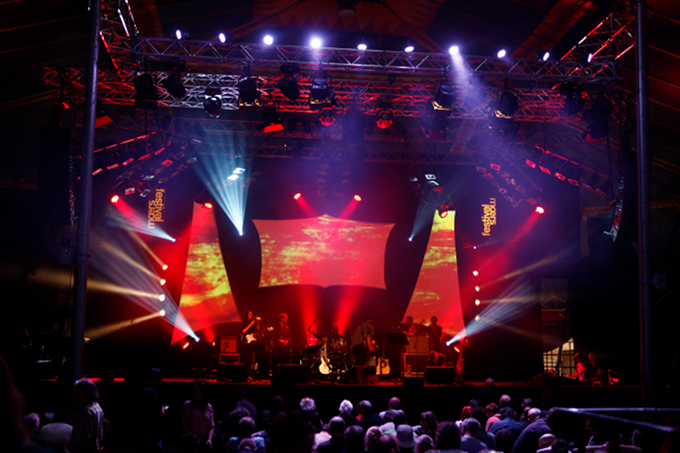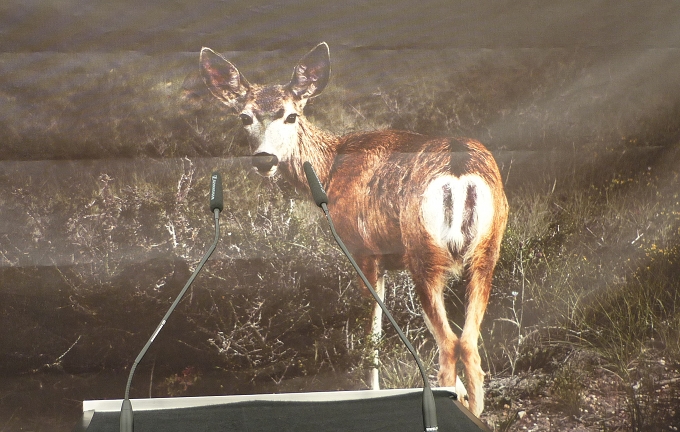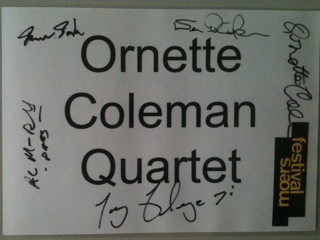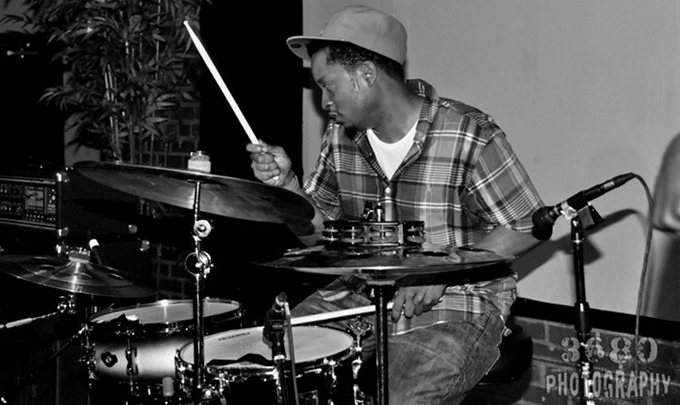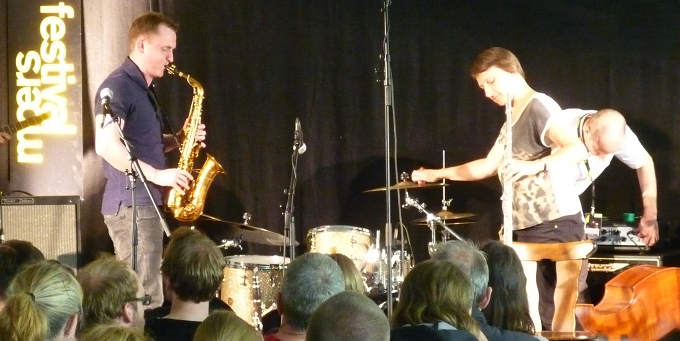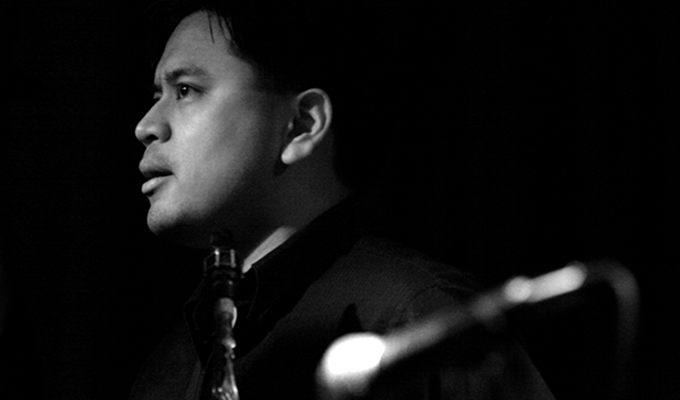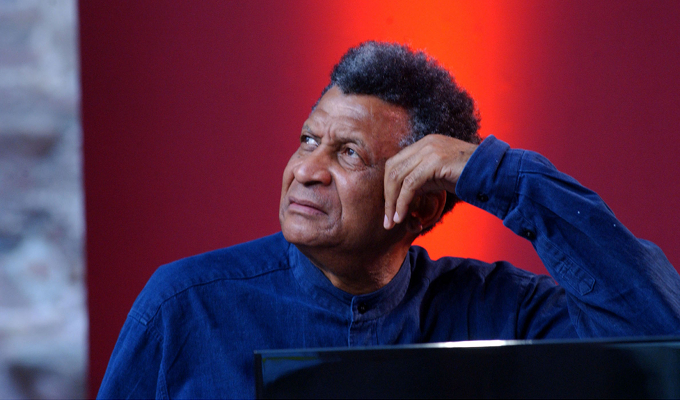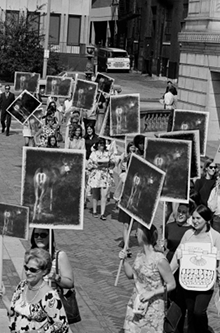I spent a fascinating moment behind the light-mixers and the VJs of the moers festival. Much more goes on here than I ever dreamed of imagining. The light-scene is just simply its own entire world in the cosmos of all things do to with the concert.
The moers festival stage is lit by three different types of light. On the one side, there are the spotlights with light-bulbs infront of which there is a foil. Generally, this light source is one colour and when more than one foil can be chosen, the colour change will take some time. On the other side, there is the LED lighting. These can change colour very quickly, however the colours are slightly patchy, but they use 75% less energy - which is much to the delight of the green moers festival. This technology was used for the first time this year and was met with a positive response.
As a third light source, spot-lights armed with light bulbs, over which a prism has been imposed, are used, and a filter added which causes moving shapes and figures.
These three types of spot-light options are controlled by the light technician at the mixing table with a computer connected to it. The computer allows for pre-settings to be made, and thus for a terrifically speedy show, as we have experienced, for example, at the LA-33 performance.
In the festival tent, a fog machine causes the air to make all the spot-lights visible and the colour gradients noticeable. Thanks to the fog, the entire stage becomes immersed in colour.
Without fog, the lights need to be projected onto surfaces, and the resulting reflections as well as the illuminated surfaces would in this case provide the atmosphere.
A VJ has his own functions and possibilities, apart from those of the light technician, however, they do work together. The moers festival DJ Bruno Tait, whose real name is Kjell Rijntjes, spoke to me about his job in the lighting command center:
The light technician and the VJ presented some examples of light ambiance during a sound-check of the Golden Palominos. The festival photographer, Oliver Heisch, captured these for us:

The moers festival stage is lit by three different types of light. On the one side, there are the spotlights with light-bulbs infront of which there is a foil. Generally, this light source is one colour and when more than one foil can be chosen, the colour change will take some time. On the other side, there is the LED lighting. These can change colour very quickly, however the colours are slightly patchy, but they use 75% less energy - which is much to the delight of the green moers festival. This technology was used for the first time this year and was met with a positive response.
As a third light source, spot-lights armed with light bulbs, over which a prism has been imposed, are used, and a filter added which causes moving shapes and figures.
These three types of spot-light options are controlled by the light technician at the mixing table with a computer connected to it. The computer allows for pre-settings to be made, and thus for a terrifically speedy show, as we have experienced, for example, at the LA-33 performance.
In the festival tent, a fog machine causes the air to make all the spot-lights visible and the colour gradients noticeable. Thanks to the fog, the entire stage becomes immersed in colour.
Without fog, the lights need to be projected onto surfaces, and the resulting reflections as well as the illuminated surfaces would in this case provide the atmosphere.
A VJ has his own functions and possibilities, apart from those of the light technician, however, they do work together. The moers festival DJ Bruno Tait, whose real name is Kjell Rijntjes, spoke to me about his job in the lighting command center:
The light technician and the VJ presented some examples of light ambiance during a sound-check of the Golden Palominos. The festival photographer, Oliver Heisch, captured these for us:


